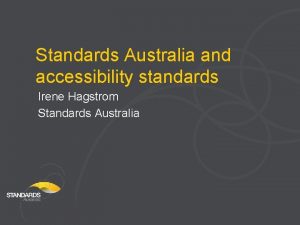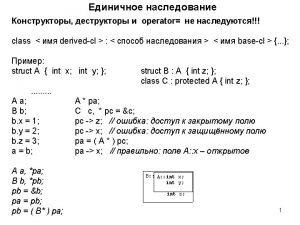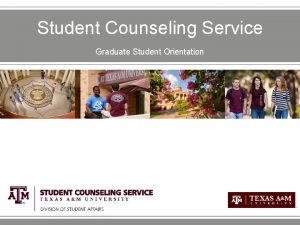STANDARDS SS 7 G 8 The student will













































- Slides: 45

STANDARDS: SS 7 G 8 The student will analyze the diverse cultural characteristics of the people who live in Southwest Asia (Middle East). a. Explain the differences between an ethnic group and a religious group. b. Describe the diversity of religions within the SW Asia ethnic groups (Arabs, Persians, and Kurds). c. Compare and contrast the prominent religions in SW Asia: Judaism, Islam, and Christianity. © Brain Wrinkles

Ethnic Groups CLOZE Notes 1 Ethnic Group • This is a group of people who share a __________. • They are identified on the basis of religion, __________ , or national origin. • Ethnic groups can have many __________ : • Shared history, common __________ , language, religion, __________ , beliefs, holidays, food, etc. • These characteristics have been part of their community for __________. • All of these things make up a __________ that is shared by the members of the ethnic group. • Three __________ in the Middle East are the Arabs, Persians, and Kurds. Religious Group • This is a group of people who share a __________. • A religious group is identified based on common religious beliefs and __________. • They believe in the __________ (or gods) and have a common sacred text with a specific set of rules about __________. • Religious groups have many things in common: • God(s), prophets, __________ , history, __________ , religious laws, holy days, etc. • People from different ethnic groups may share the same religion; however, they may be from __________. • Three major religious groups in the Middle East are Jews, __________ , and Christians. ARABS Location • The majority of people in the Middle East are __________. • Arabs also live in the United States, Canada, parts of __________ , and Europe. Ancestry • Arabs of Southwest Asia believe themselves to be descendants of Abraham through his __________. • Arabs make up the __________ who live throughout the Middle East. © Brain Wrinkles

Ethnic Groups CLOZE Notes 2 Religion • Most Arabs practice __________ , while small numbers of Arabs practice other religions. • Not all Arabs are Muslims, and __________ are Arabs. • Islam consists mostly of __________. • The majority of Muslims practice __________ , and most others practice Shi’a Islam. • Sunnis and Shi’a disagree about __________ of the Muslim world. • Sunni Islam dominates in most Arab areas, especially in __________. • Shi’a Islam is dominant among the Arab population in __________ , Lebanon, Saudi Arabia, Kuwait, Bahrain, northern Syria, & northern Yemen. Language • Most Arabs, whether they are Muslim or Christian, speak __________. PERSIANS Location • Most Persians __________ and make up about half of Iran’s current population. • The country of Persia became known as Iran in __________. • Some Persians can also be found living in __________ , Tajikistan, Uzbekistan, Pakistan, and the Xinjiang province of China. Ancestry • The Persians lived in Iran before the __________ in the 7 th century. • The Persians’ ancestors were Indo-Europeans who migrated from central Europe and Southern Russia and formed a __________. Religion • Most Persians in Iran practice __________ , but some are Sunni and other religions. • Persian women have __________ as a result of strict cultural and religious practices. Language • Persians speak a language called __________ (or Persian). • It is one of the __________ that is still spoken today! © Brain Wrinkles

Ethnic Groups CLOZE Notes 3 KURDS Location • The Kurds are an ethnic group that originated as a __________ people. • Kurds now live in the __________ of Turkey, Syria, Iraq, and Iran. • Kurds form almost 20% of the population of __________. • Many Kurds live in an area of northern Iraq called __________ (not a separate country). • The Kurds are the largest ethnic group in the world __________ of their own. • There is a strong __________ among the Kurds for their own nation. • This has caused conflict with the countries in which Kurdish people live, and Iraq and Turkey have both __________ and their traditions. Ancestry • Kurds of Southwest Asia believe themselves to be descendants of the __________ , an ancient Iranian people. • In fact, Kurds share many aspects of their __________. Religion • Like the Arabs, the Kurds are overwhelmingly Muslim, and the great __________ ; only 5% are Shi’a. • Kurdish Muslims tend to be __________ about certain Islamic practices. • For example, there are __________ for how Kurdish women should dress than there are for Iranian and Arab women. Language • __________ is an Indo-European language related to Farsi (Persian) and other Iranian languages. • There are __________ of Kurdish spoken throughout Southwest Asia. © Brain Wrinkles

Southwest Asia’s Ethnic Groups Arabs, Persians, & Kurds © Brain Wrinkles

Ethnic Group • This is a group of people who share a common culture. • They are identified on the basis of religion, race, or national origin. • Ethnic groups can have many things in common: • Shared history, common ancestry, language, religion, traditions, beliefs, holidays, food, etc. © Brain Wrinkles

Ethnic Group • These characteristics have been part of their community for generations. • All of these things make up a common culture that is shared by the members of the ethnic group. • Three major ethnic groups in the Middle East are the Arabs, Persians, and Kurds. © Brain Wrinkles

© Brain Wrinkles

Religious Group • This is a group of people who share a belief system. • A religious group is identified based on common religious beliefs and practices. • They believe in the same god (or gods) and have a common sacred text with a specific set of rules about how to live. © Brain Wrinkles

Religious Group • Religious groups have many things in common: • God(s), prophets, prayers, history, sacred text, religious laws, holy days, etc. • People from different ethnic groups may share the same religion; however, they may be from different cultures. • Three major religious groups in the Middle East are Jews, Muslims, and Christians. © Brain Wrinkles

© Brain Wrinkles

ARABS © Brain Wrinkles

Location • The majority of people in the Middle East are Arabs. • Arabs also live in the United States, Canada, parts of northern Africa, and Europe. © Brain Wrinkles

© Brain Wrinkles

© Brain Wrinkles

Ancestry • Arabs of Southwest Asia believe themselves to be descendants of Abraham through his son Ishmael. • Arabs make up the majority of the people who live throughout the Middle East. © Brain Wrinkles

© Brain Wrinkles

Religion • Most Arabs practice Islam, while small numbers of Arabs practice other religions. • Not all Arabs are Muslims, and not all Muslims are Arabs. • Islam consists mostly of two different groups. • The majority of Muslims practice Sunni Islam, and most others practice Shi’a Islam. • Sunnis and Shi’a disagree about who is in charge of the Muslim world. © Brain Wrinkles

Religion • Sunni Islam dominates in most Arab areas, especially in North Africa. • Shi’a Islam is dominant among the Arab population in southern Iraq, Lebanon, Saudi Arabia, Kuwait, Bahrain, northern Syria, & northern Yemen. © Brain Wrinkles

The Kaaba, located in Mecca, Saudi Arabia is the center of Islam. © Brain Wrinkles

Language • Most Arabs, whether they are Muslim or Christian, speak Arabic. © Brain Wrinkles

© Brain Wrinkles

PERSIANS © Brain Wrinkles

Location • Most Persians live in Iran and make up about half of Iran’s current population. • The country of Persia became known as Iran in 1935. • Some Persians can also be found living in Afghanistan, Tajikistan, Uzbekistan, Pakistan, and the Xinjiang province of China. © Brain Wrinkles

Iran’s Demographics © Brain Wrinkles

Ancestry • The Persians lived in Iran before the arrival of Islam in the 7 th century. • The Persians’ ancestors were Indo. Europeans who migrated from central Europe and Southern Russia and formed a great empire. © Brain Wrinkles

Persian Empire © Brain Wrinkles

Religion • Most Persians in Iran practice Shi’a Islam, but some are Sunni and other religions. • Persian women have faced many challenges as a result of strict cultural and religious practices. © Brain Wrinkles

© Brain Wrinkles

© Brain Wrinkles

© Brain Wrinkles

Language • Persians speak a language called Farsi (or Persian). • It is one of the oldest languages that is still spoken today! © Brain Wrinkles

Farsi Translations © Brain Wrinkles

KURDS © Brain Wrinkles

Location • The Kurds are an ethnic group that originated as a semi-nomadic, tribal people. • Kurds now live in the mountains of Turkey, Syria, Iraq, and Iran. • Kurds form almost 20% of the population of Turkey and Iraq. • Many Kurds live in an area of northern Iraq called Kurdistan (not a separate © Brain Wrinkles

© Brain Wrinkles

Location • The Kurds are the largest ethnic group in the world without a country of their own. • There is a strong nationalist movement among the Kurds for their own nation. • This has caused conflict with the countries in which Kurdish people live, and Iraq and Turkey have both suppressed the Kurds and their traditions. © Brain Wrinkles

© Brain Wrinkles

Ancestry • Kurds of Southwest Asia believe themselves to be descendants of the Medes, an ancient Iranian people. • In fact, Kurds share many aspects of their culture with Iranians. © Brain Wrinkles

© Brain Wrinkles

Religion • Like the Arabs, the Kurds are overwhelmingly Muslim, and the great majority are Sunni; only 5% are Shi’a. • Kurdish Muslims tend to be less strict about certain Islamic practices. • For example, there are fewer laws for how Kurdish women should dress than there are for Iranian and Arab women. © Brain Wrinkles

© Brain Wrinkles

Language • Kurdish is an Indo-European language related to Farsi (Persian) and other Iranian languages. • There are many different dialects of Kurdish spoken throughout Southwest Asia. © Brain Wrinkles

Southwest Asia’s Ethnic Groups Directions: Complete the chart below after discussing the presentation. Location Arabs Persia ns Kurds © Brain Wrinkles Ancestry Religion Language

Ethnic Groups Comprehension Check 1. What is a community of people sharing a common culture, ancestry, customs, and language known as? 2. What do members of a religious group have in common? 3. The majority of people in the Middle East are members of which ethnic group? 4. Most Arabs are followers of which religion? 5. Kurds live in mountainous parts of the Middle East, an area informally called: 6. Which modern day country is home to Persians? 7. What language do Persians speak? 8. Most Kurds practice _____ Islam, while most Persians practice _____ Islam. 9. True or False (and explain): “Arabs, Persians, and Kurds all live in roughly the same region of the world and are virtually the same people except they live in different countries. © Brain Wrinkles
 Customer defined service standards
Customer defined service standards Student friendly standards
Student friendly standards Iste student standards poster
Iste student standards poster Morning students
Morning students Class maths student student1 class student string name
Class maths student student1 class student string name Student learning space singapore
Student learning space singapore How did you ... your last weekend?
How did you ... your last weekend? National student clearinghouse student tracker
National student clearinghouse student tracker What did they do last weekend
What did they do last weekend Freckle student dashboard
Freckle student dashboard National student clearinghouse student tracker
National student clearinghouse student tracker Hát lên người ơi alleluia
Hát lên người ơi alleluia Sự nuôi và dạy con của hổ
Sự nuôi và dạy con của hổ đại từ thay thế
đại từ thay thế Vẽ hình chiếu vuông góc của vật thể sau
Vẽ hình chiếu vuông góc của vật thể sau Quá trình desamine hóa có thể tạo ra
Quá trình desamine hóa có thể tạo ra Công thức tiính động năng
Công thức tiính động năng Thế nào là mạng điện lắp đặt kiểu nổi
Thế nào là mạng điện lắp đặt kiểu nổi Dạng đột biến một nhiễm là
Dạng đột biến một nhiễm là Lời thề hippocrates
Lời thề hippocrates Bổ thể
Bổ thể Vẽ hình chiếu đứng bằng cạnh của vật thể
Vẽ hình chiếu đứng bằng cạnh của vật thể độ dài liên kết
độ dài liên kết Môn thể thao bắt đầu bằng từ chạy
Môn thể thao bắt đầu bằng từ chạy Sự nuôi và dạy con của hươu
Sự nuôi và dạy con của hươu điện thế nghỉ
điện thế nghỉ Thế nào là sự mỏi cơ
Thế nào là sự mỏi cơ Một số thể thơ truyền thống
Một số thể thơ truyền thống Trời xanh đây là của chúng ta thể thơ
Trời xanh đây là của chúng ta thể thơ Voi kéo gỗ như thế nào
Voi kéo gỗ như thế nào Thiếu nhi thế giới liên hoan
Thiếu nhi thế giới liên hoan Số nguyên tố là số gì
Số nguyên tố là số gì Tỉ lệ cơ thể trẻ em
Tỉ lệ cơ thể trẻ em Phối cảnh
Phối cảnh Các châu lục và đại dương trên thế giới
Các châu lục và đại dương trên thế giới Thế nào là hệ số cao nhất
Thế nào là hệ số cao nhất Sơ đồ cơ thể người
Sơ đồ cơ thể người Tư thế ngồi viết
Tư thế ngồi viết Hát kết hợp bộ gõ cơ thể
Hát kết hợp bộ gõ cơ thể đặc điểm cơ thể của người tối cổ
đặc điểm cơ thể của người tối cổ Cách giải mật thư tọa độ
Cách giải mật thư tọa độ Tư thế worms-breton
Tư thế worms-breton ưu thế lai là gì
ưu thế lai là gì Tư thế ngồi viết
Tư thế ngồi viết Thẻ vin
Thẻ vin Thơ thất ngôn tứ tuyệt đường luật
Thơ thất ngôn tứ tuyệt đường luật




































































